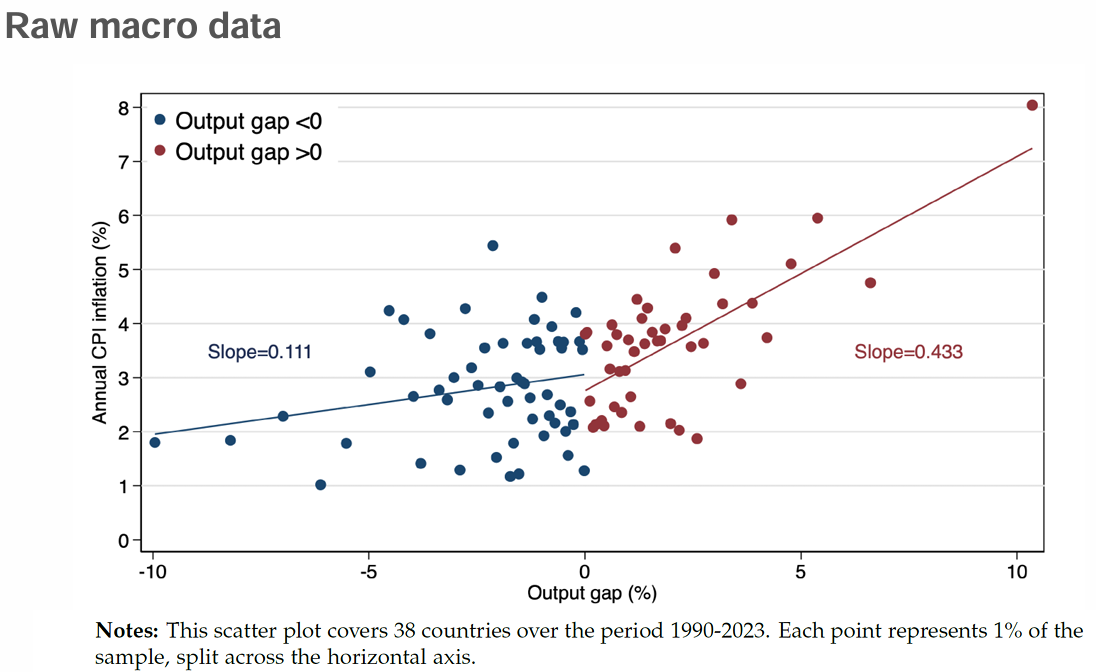というNBER論文が上がっている。原題は「How Curvy is the Phillips Curve?」で、著者はPhilip Bunn(BOE)、Lena Anayi(同)、Nicholas Bloom(スタンフォード大)、Paul Mizen(キングス・カレッジ・ロンドン)、Gregory Thwaites(ノッティンガム大)、Ivan Yotzov(BOE)。
以下はその要旨。
Macro data suggests a convex relationship between inflation and economic slack, but identifying causality is challenging. Using micro data from large panel surveys of UK and US firms we show that the response of prices to demand shocks is also convex at the firm level. We obtain similar results using three different empirical exercises examining: the impact of COVID demand shocks, the response to sales shocks, and hypothetical shocks from a survey question. This convexity is strongest in firms and industries with higher inflation, disappears in horizons beyond two years, and is also present in response to cost shocks. We rationalize these findings in a menu cost model with positive trend inflation and decreasing returns at the firm level, which replicates firm and aggregate Phillips curve convexity. The non-linearity emerges from trend inflation pushing firms closer to their price increase thresholds.
(拙訳)
マクロのデータはインフレと経済のスラックの関係が凸であることを示しているが、因果関係を識別するのは困難である。英米企業の大規模なパネル調査のミクロデータを用いて我々は、需要ショックへの価格の反応が企業レベルでも凸であることを示した。コロナ禍の需要ショックの影響、売り上げショックへの反応、および調査の質問における仮説的なショックを調べた3つの異なる実証分析を用いて我々は、同様の結果を得た。この凸性はインフレが高い企業と産業で最も強く、2年後以降には消失し、コストショックへの反応においても存在した。以上の発見を我々は、企業レベルの正のトレンドのインフレと収穫逓減のあるメニューコストモデルで理論的に説明した。モデルでは企業ならびにマクロのフィリップス曲線の凸性が再現された。非線形性は、企業を価格引き上げの閾値に近付けるトレンドインフレから生じる。
こちらのセミナーで示されたスライド資料では、マクロおよび3つのミクロデータについて以下のように凸性が示されている。





また、メニューコストモデルで凸性を説明することができたものの、 生産能力の制約(Capacity constraints)、金融制約(Financial constraints)、非線形な需要曲線(Non-linear demand curves)、非線形な賃金の反応(Non-linear wage responses)といったモデルでも凸性は説明できてしまうため*1、以下のように、インフレの高低による違い、長期的な反応、コストショックについてもモデルの予測がミクロデータの事実に合うことを確認したとの由。




*1:cf. 傾いたL字型のフィリップス曲線 - himaginary’s diaryで紹介したBenigno=Eggertssonは生産能力の制約を強調していた。